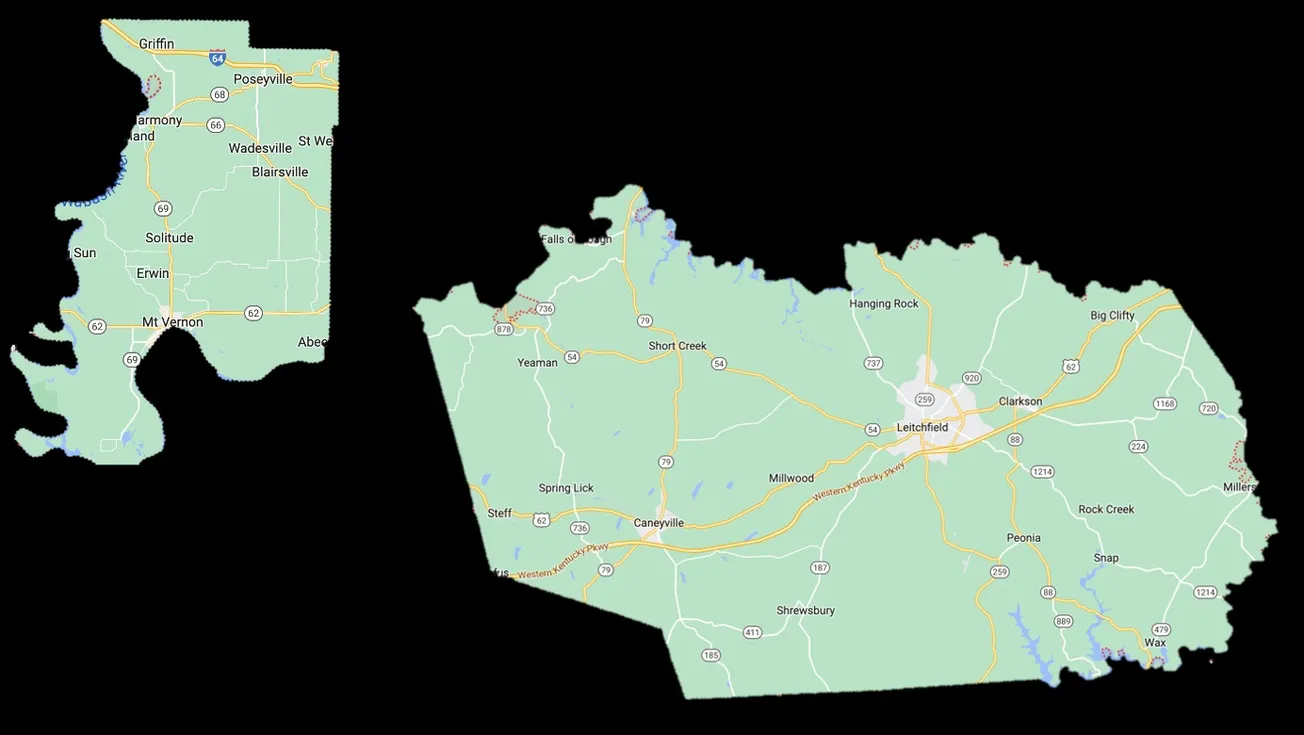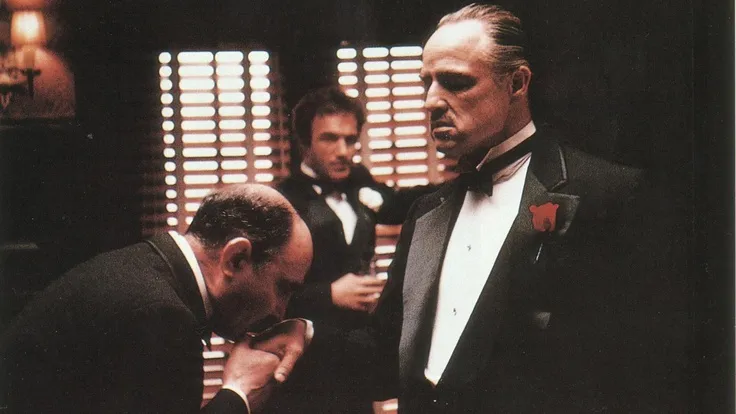Table of Contents
It’s a 2-hour drive from Leitchfield, Kentucky, the county seat of Grayson County, to Mount Vernon, Indiana, the county seat of Posey County. The two counties share some striking similarities.
Grayson County, formed in 1810, was named after Colonel William Grayson, a Revolutionary War hero (and later a U.S. Senator from Virginia). Posey County, formed in 1814, was named after General Thomas Posey, a Revolutionary War hero (and later a U.S. Senator from Louisiana).
Grayson County has a total area of 511 square miles, and a population of roughly 26,420. About 98% is white; just .5% is black. In the 2020 presidential election, about 79% voted Republican, and 20% voted Democrat.
Posey County covers 419 square miles, with a population of about 25,910. About 97% is white; just .9% is black. In the 2020 presidential election, about 70% voted Republican, and 29% voted Democrat.
They also share some troubling history.
The Backstory
Posey County then
On October 11, 1878, Jim Good, Jeff Hopkins, Ed Warner, William Chambers, and Dan Harris, Sr. were lynched in Posey County, Indiana, near the town of Mount Vernon. They were killed by a white mob who broke into the jail where they were being held in connection with the alleged robbery of a brothel. Dan Harris, Jr. and John Harris were also lynched in the days just before October 11 in connection with the same alleged offense. It was the largest reported lynching – seven men all totaled – in Indiana’s history.
Grayson County then
On Friday, September 26, 1913, The Leitchfield Gazette ran a front-page story with five headlines:
NEGRO ATTEMPTS ASSAULT ON CHILD
Frightened Away, but is Soon Caught by Posse of Grayson Farmers
LITTLE GIRL UNINJURED
Was on Way to School with Six-Year-old Brother when Assault Was Attempted
NO FEAR OF LYNCHING HIM
The story begins: “A negro, giving his name as Joe Richardson and claiming to be from Nashville, was arrested by a posse of farmers Tuesday after attempting an assault on the eleven-year-old daughter of Anderson Goff, at South, about 15 miles from Leitchfield, in this county.”
There are varying accounts of the alleged assault. In this and every account, the girl was not injured. The story concludes: “The girl was not injured, and although feelings run high in the section where the attempted assault occurred, there is believed to be no likelihood of a lynching.”
A “Special to Gazette” ran below the main story. It used more incendiary language: “A dastardly attempt by a black negro who claims Tennessee as his home, was made upon the pretty little ten-year-old daughter of Mr. J. A. Goff, of South, has thrown this end of Grayson county into a fever of excitement, and only by cool heads was a lynching averted.”
The front-page stories ran on Friday, three days after the alleged incident and Richardson’s arrest. Perhaps they precipitated Richardson’s lynching, which happened shortly after midnight.
According to the book “Lynching Reconsidered: New Perspectives in the Study of Mob Violence” by William D. Carrigan: “In 1913, a mob of masked men in Leitchfield, Kentucky, abducted Joseph Richardson, charged with criminal assault upon a young white girl, and hanged him from a tree in the public square. It was reported that ‘the mob worked quietly, and most of the citizens of Leitchfield knew nothing of it until the body was found hanging from a tree early this morning. A large crowd congregated after the hanging was reported.’ A photograph of Richardson’s hanging body was mounted on a card and peddled door-to-door by an unknown photographer.”
The following edition of The Leitchfield Gazette, published October 3, 1913, does not contain a single word about the lynching or Joe Richardson. No one was ever prosecuted for Richardson’s murder.
And today in Posey County ...
Just last year in Posey County, Indiana, a teen named Sophie Kloppenburg received a standing ovation from the city council and the local community for the role she played in the placement of a memorial bench and historical marker at the site of the 1878 lynchings outside the Posey County Courthouse.
“I’m sure people don't want to remember because it’s hard to remember tough things, but it's unacceptable to just forget,” Kloppenburg told CBS News.
After the standing ovation, Kloppenburg thanked her community. “I'm proud of Posey County, Indiana, and the beautiful people here for having the difficult conversations and giving a tangible voice to its minorities,” she said. “Thank you.”
Markers and remembrance
The Equal Justice Initiative (EJI), founded in 1989 by Bryan Stevenson, is committed to challenging racial and economic injustice and changing the narrative about race in America.
In 2018, they opened the Legacy Museum: From Enslavement to Mass Incarceration, and the National Memorial for Peace and Justice, as part of a national effort to create new spaces, markers, and memorials that address the legacy of slavery, lynching, and racial segregation.
The EJI’s Community Remembrance Project works with communities to memorialize victims of racial violence and create meaningful dialogue about race and justice. As part of their effort to help communities confront and recover from tragic histories of racial violence, EJI works with local communities to install narrative historical markers at the sites of racial terror lynchings, such as the one in Posey County, Indiana.
Just last year, state and local officials and community members dedicated a historical marker on the north side of the Singing Bridge in downtown Frankfort, Kentucky, to commemorate the lynchings of Marshall Boston in 1894 and John Maxey in 1909.
Kentucky Gov. Andy Beshear made opening remarks at the historical marker dedication ceremony. “Today, I think we are trying to step one step closer to justice,” Mr. Beshear said. “I admit when you’re trying to do that, it can be both good and be tough. Tough in the sense that we have to look back today on one of the ugliest chapters in our history. And we have to look at it straight without blinking and without turning away.
“It’s a good day when you look around and see how many people have come together, from this community and from outside of it, to say ‘We will not hide from history. We will ensure our children know our history.’”
Between 1877 and 1950, more than 4,400 Blacks were the victims of lynching in America, and many more thousands were the victims of racial violence. This era of racial terrorism shaped the geographic, social, and economic conditions of African Americans still evident today.
According to the FBI’s annual hate crime statistics report, bias against African Americans overwhelmingly comprised the largest category of reported hate crime offenses pertaining to race, with a total of 56% of those crimes motivated by anti-Black (or African American) bias.
And in Grayson County?
There are people who grew up in Grayson County who never heard about the lynching of Joe Richardson. There are children here who never learn that racial violence is part of Grayson County’s history.
The lynching of Joe Richardson is a small part of a much larger story. A historical marker – like the one in Posey County, Indiana, and the one in Frankfort, Kentucky – should be erected to tell that small part of the story.
Future generations should be mindful of the lynching of Joe Richardson. Our children need to learn the truth – however cruel and ugly.
--30--








